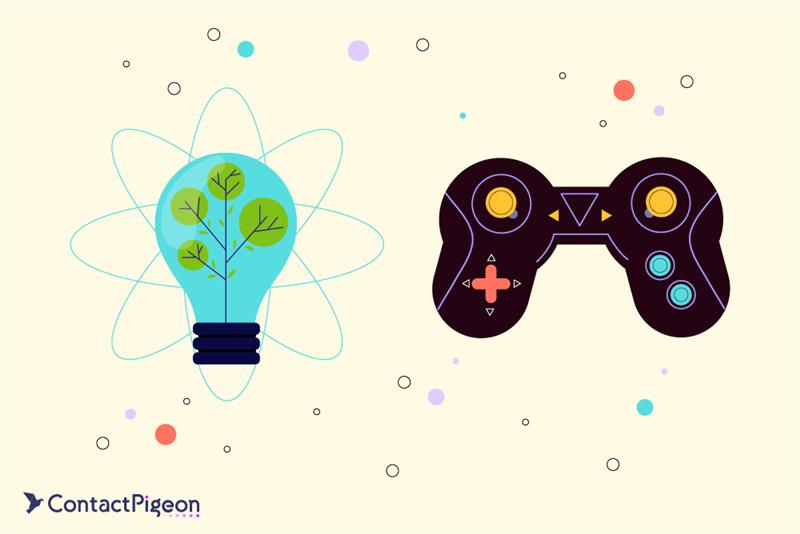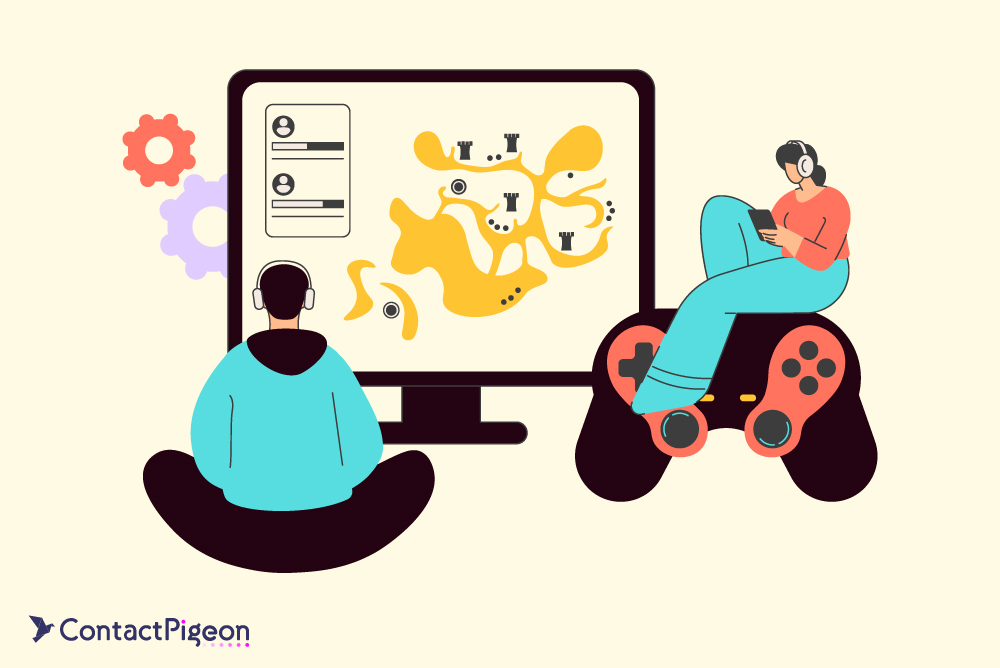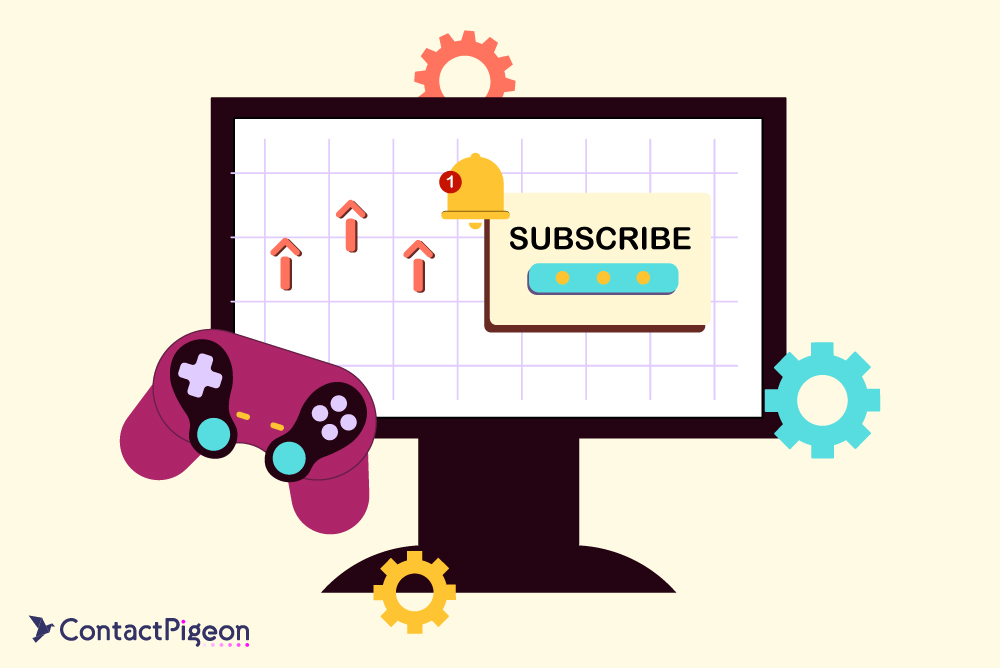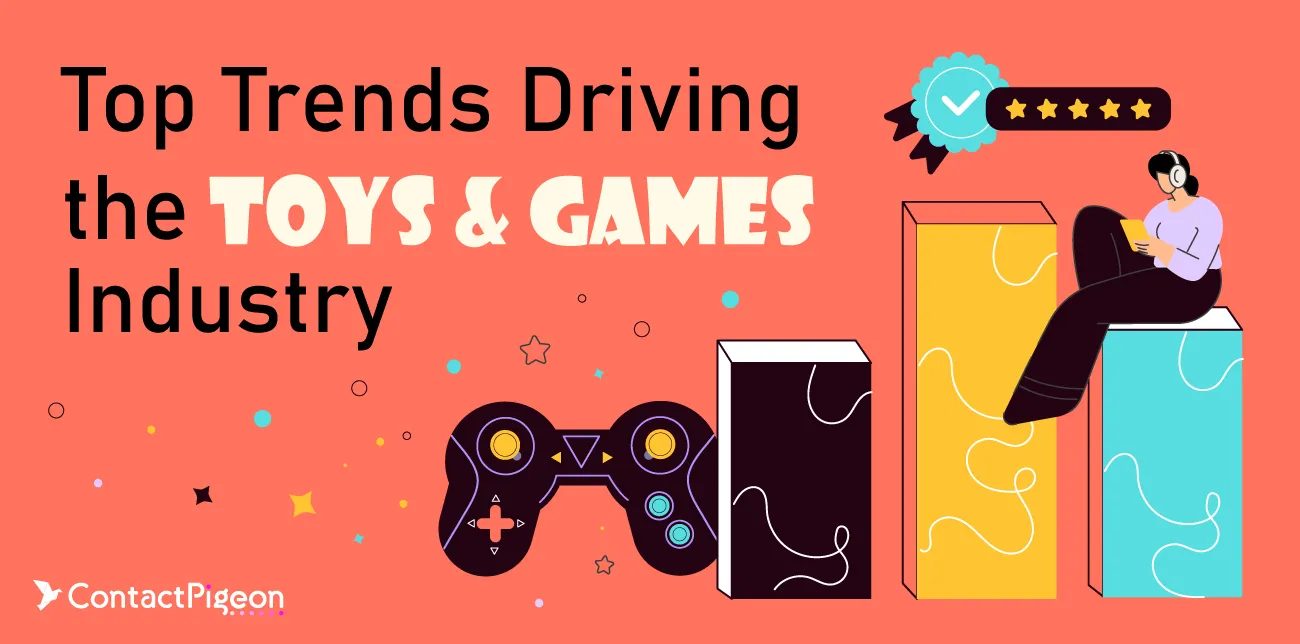The toys & games industry is undergoing a dynamic transformation in 2025, driven by rapid tech innovation, growing environmental awareness, and evolving consumer expectations. From AI-powered playmates to immersive AR/VR experiences, the market is adapting faster than ever to keep up with what kids (and adults!) want. As sustainability becomes non-negotiable and digital interactivity takes center stage, brands must stay ahead of these shifts to remain competitive. Understanding the top toys & games industry trends is no longer optional; it’s essential for staying relevant in an increasingly tech-savvy and values-driven marketplace.
The evolution of the toys & games industry trends: 2000–2025
Over the past 25 years, the Toys & Games industry has undergone a major transformation, driven by advances in technology, rising sustainability demands, and shifting consumer preferences.
- From 2000 to 2010, traditional toys ruled the market. Tech integration was minimal, and concepts like AI or AR/VR were practically unheard of.
- Between 2010 and 2020, smart toys began to emerge, blending entertainment with learning. Early experiments with AR/VR and a growing focus on eco-friendly materials hinted at where the industry was headed.
- By 2025, the shift will be undeniable. AI-powered toys will now make up 75% of the market (a huge leap from just 5% in 2000), AR/VR gaming will go mainstream, and sustainable materials will no longer be optional, but expected.
This evolution reflects how consumer expectations have reshaped the way we define play. Looking ahead, the focus is on even deeper digital immersion, personalized experiences, and a stronger commitment to responsible, future-ready products.
#1: AI toys & games revolution – Smart play is shaping the future

One of the biggest toys & games industry trends in 2025 is the rise of AI-powered play. What began with simple electronic toys like talking dolls has evolved into fully interactive, intelligent companions that can learn, adapt, and respond in real time. These smart toys are redefining how children play, learn, and connect with technology.
AI & smart toys in action: The best AI-powered play experiences
- AI learning robots (Miko 3, Cozmo): These robots offer personalized educational experiences by adjusting to a child’s learning pace. From storytelling to STEM challenges, they make learning more engaging and adaptive than ever.
- Voice-interactive dolls & plush toys (Hello Barbie, FurReal Friends): Using voice recognition and conversational AI, these toys respond to kids in real-time, creating dynamic interactions that go beyond pre-programmed responses.
- Chatbot-driven play: AI-powered storytelling toys are becoming increasingly popular, offering features like language learning, emotional recognition, and interactive stories that adapt to a child’s mood or interests.
Why AI toys are more than just fun & games
AI toys are reshaping childhood play by blending fun with meaningful development. Here’s how they’re making a lasting impact:
- They deliver personalized, adaptive experiences that respond to a child’s interests, behavior, and learning style, making playtime feel more engaging and unique.
- They enhance educational development, especially in STEM subjects, by promoting problem-solving, critical thinking, and creativity through interactive learning.
- They’re valued by parents and educators as tools that encourage learning through play, offering an enriching alternative to passive screen time.
- They meet the rising demand for customization, aligning perfectly with the 2025 consumer trend toward more interactive, personalized, and intelligent toys in the toys & games industry.
Beyond smart: The next generation of AI-powered play
As AI capabilities advance, the next generation of toys is going beyond simple interaction and entering the realm of emotional intelligence and creativity. Here’s what the future holds:
- AI-driven storytelling toys can craft unique bedtime stories tailored to a child’s vocabulary level, interests, or even emotional state, turning each story into a personalized experience.
- Emotion-sensing toys are equipped with sensors and emotional recognition, and can detect a child’s mood and respond appropriately. They offer comfort, encouragement, or adapt play based on how the child feels.
- AI-powered DIY kits empower kids to train their toys to perform new actions. They blend play with early coding concepts and creative problem-solving.
Just like AI is revolutionizing toys, it’s also reshaping marketing. Learn now about the digital transformation in retail and how AI-powered automation helps brands personalize engagement and boost conversions.
#2: Eco-friendly & green toys – Sustainability is transforming the toy industry

Sustainability has evolved into a core driver of innovation in the toys & games industry trends in 2025. Traditionally dominated by plastic-heavy, mass-produced toys, the industry is now shifting toward environmentally responsible alternatives. Millennial and Gen Z parents are leading this change, actively seeking out toys that are biodegradable, toxin-free, and made from sustainable or upcycled materials. These demands are shaping product design, packaging, and even business models. According to Business Research Insights, the global eco-friendly toys market is expected to grow from $25.79 billion in 2022 to $60.19 billion by 2031, highlighting just how vital sustainability has become in the toys & games industry trends in 2025.
Eco-friendly fun: Top toys leading the sustainability movement
Today’s green toys are not only fun but also thoughtfully designed to minimize environmental impact. These innovations reflect a broader shift within the toys & games industry trends in 2025 toward conscious consumption and circular economy models. Here are some standout examples reshaping the market:
Recyclable & plant-based toys
- LEGO Sustainable Bricks: Made from bioplastic sourced from sugarcane, offering the same durability with a reduced carbon footprint.
- Green Toys: Created from 100% recycled milk jugs and BPA-free plastic, these toys are safe for kids and the planet.
Biodegradable & upcycled toys
- PlanToys: Crafts toys using rubberwood from retired rubber trees, utilizing non-toxic dyes and water-based glues.
- Biodegradable Plush Toys: Made from organic cotton and plant-based dyes, these cuddly toys naturally break down over time.
Toy rental & subscription services
- Toybox Club and Lovevery: These services offer curated monthly toy kits that can be returned or reused, drastically cutting down on waste and clutter.
The power of green play: Why sustainability in toys matters
As sustainability continues to dominate toys & games industry trends in 2025, brands that embrace green innovation are not just doing good. They’re also securing a competitive edge:
- 75% of millennial parents prefer sustainable brands, directly influencing purchasing decisions and brand loyalty.
- Governments are tightening regulations around plastic waste and requiring more sustainable production practices.
- Parents are willing to pay a premium for toys that align with their values, viewing sustainability as a marker of quality and safety.
- Eco-friendly toys reduce environmental harm, helping the industry move away from single-use plastics toward biodegradable, long-lasting alternatives.
Reach eco-conscious shoppers effortlessly with ContactPigeon’s AI-powered marketing. Smart segmentation and personalized campaigns ensure your sustainable toys connect with the right audience and drive sales.
#3: Personalized & customizable play experiences – Play your way

One of the most exciting developments in the toys & games industry trends in 2025 is the rise of personalized and customizable play. In the early 2000s, mass-produced toys filled store shelves, offering the same play experience to millions of children. Fast forward to 2025, and personalization is no longer a luxury. Parents and kids alike now seek toys that reflect their individual interests, preferences, and identities. This demand has been fueled by major advancements in 3D printing, modular toy design, and AI-driven customization. As a result, the market for custom toys has seen steady growth over the last two decades, becoming a key pillar of innovation in the toys & games industry.
Made just for you: The top personalized toys kids love
Today’s personalized toys are smarter, more interactive, and more meaningful, designed to grow and evolve with each child. Here are the three major categories leading the movement in the toys & games industry:
3D-printed & build-your-own toys
- Mattel’s ThingMaker lets kids design and 3D print their own toy creations at home, empowering them with hands-on creativity and design thinking.
- LEGO Custom Sets allow customers to personalize sets based on themes, colors, and even specific characters, creating a play experience that feels truly one-of-a-kind.
Name-personalized & custom storytelling toys
- Wonderbly’s Personalized Books feature the child’s name, likeness, and personal traits, making storytime immersive and emotionally resonant.
- American Girl Dolls can be customized down to hair color, skin tone, outfit, and accessories, making representation and identity a central part of play.
Adaptive AI-driven play
- Osmo Genius Kits adapt their learning modules based on a child’s pace and skill level, turning screen time into highly personalized educational engagement.
- AI-powered plush toys respond to a child’s voice, behavior, and emotions, creating a comforting and emotionally intelligent play companion.
The power of personalization: Why custom toys matter
Personalized toys are meaningful, and that’s what makes them so powerful. Here’s why customization is becoming a cornerstone in the toys & games industry:
- Kids form stronger emotional bonds with toys that are made just for them, leading to longer play cycles and deeper engagement.
- AI-driven personalization enhances learning, adjusting content or difficulty in real time to meet a child’s unique developmental needs.
- Parents are increasingly willing to pay more for toys that feel special, exclusive, and tailored, adding not just play value, but emotional value too.
- As the industry shifts toward individualization, toys & games industry trends in 2025 are proving that personalization is more than a feature, becoming the future of play.
Consumers don’t just want personalized toys. They expect personalized shopping experiences too. Read now the Omnichannel Personalization Strategy for Retailers that enhances engagement and sales.
#4: AR/VR-powered play – Immersive tech transforms the toy experience

Augmented Reality (AR) and Virtual Reality (VR) are no longer just for gamers. In the toys & games industry trends, AR/VR has evolved into a powerful tool that enhances how children play, learn, and interact with the world around them. These technologies now bridge the gap between physical and digital play, offering immersive experiences that boost creativity, critical thinking, and social interaction. From interactive storybooks to virtual playgrounds, AR/VR is transforming toys into multi-sensory adventures that grow with the child. Educational institutions and toy brands alike are embracing AR/VR as essential components of modern play.
Why AR/VR is no longer just for gamers
The increasing integration of AR/VR is a defining aspect of toys & games industry trends in 2025, and it’s setting a new standard for immersive, meaningful play.
- Enhances engagement: AR/VR integrates physical toys with digital environments, turning static objects into interactive experiences. For example, Merge Cube allows kids to hold and explore 3D objects in their hands, blending tactile play with virtual exploration.
- Encourages learning & creativity: Tools like Osmo and Wonderscope use AR to teach problem-solving, storytelling, and logic through engaging, educational games that adapt to each child’s learning style.
- Expands social & interactive play: AR/VR is revolutionizing play in the context of the toys & games industry trends in 2025, with platforms such as Roblox and Minecraft Education Edition. These games let kids collaborate, build, and solve challenges in virtual worlds, fostering creativity and teamwork across distances.
#5: The rise of subscription-based & digital play models

Another major shift in toys & games industry trends 2025 is the move from one-time purchases to subscription-based and digital play experiences. Inspired by models like Netflix and Spotify, toy brands are offering continuous, curated content that evolves with the child. Parents are embracing these models for their affordability, convenience, and sustainability. Plus, they reduce clutter and keep kids engaged with something new each month. According to Mordor Intelligence, the global toy subscription market is projected to grow at a CAGR of 12.1% between 2024 and 2030, while adoption has jumped from 0% in 2000 to 40% in 2025, signaling a massive transformation in consumer behavior.
Play on demand: The best subscription & digital toy experiences
Subscription-based and digital play models are redefining how kids access toys and learning tools. These models cater to modern parenting needs—convenience, value, and adaptability, while reflecting the evolving expectations in the toys & games industry trends 2025.
Toy rental & subscription services
- Lovevery, KiwiCo: Deliver age-specific, STEM-based toy kits monthly, tailored to developmental stages.
- Toybox Club, Whirli: Let parents rent toys monthly, offering variety while reducing toy waste.
Digital learning platforms & interactive play
- ABCmouse, Homer: Offer subscription-based digital learning tools that support literacy, math, and problem-solving.
- Toniebox: A screen-free storytelling device where kids can listen to curated content from a rotating library of stories and songs.
Hybrid physical-digital play experiences
- Osmo Interactive Games: Combine physical play with app-based educational games using real-world objects.
- Mattel’s Hot Wheels ID: Blends physical cars with a digital racing platform, tracking performance, and unlocking challenges.
Why subscription toys are the future of play
Subscription-based toy models represent a shift in how families approach play and education. Here’s why they’re gaining momentum in toys & games industry trends 2025:
- They provide continuous engagement, with new toys and learning content delivered regularly to keep children curious and challenged.
- They encourage sustainability, reducing plastic waste and promoting toy reuse through rental services that align with circular economy principles.
- They create strong brand loyalty, as parents appreciate the convenience and quality of curated kits that grow with their child month after month.
As digital and subscription-based models mature, they are setting a new standard in the toys & games industry trends 2025, making play smarter, greener, and more dynamic than ever.
#6: The kidult phenomenon & nostalgia marketing

One of the most surprising toys & games industry trends in 2025 is the explosive growth of the “kidult” market, adults who buy toys for themselves. Once considered niche, this movement has now gone mainstream, with Millennials and Gen Z leading the demand for nostalgic, collectible, and pop culture-inspired toys. Toys are no longer just for children; they’re tools for emotional connection, escapism, and even investment.
Why the Kidult trend is growing
- Escapism & emotional connection: Adults are turning to toys as a way to relieve stress, reconnect with simpler times, and relive their childhood memories.
- Pop culture influence: Franchises like Star Wars, Marvel, Harry Potter, and Pokémon continue to drive demand through movies, series, and reboots.
- Rise of high-end collectibles: Brands are catering to kidults with premium, limited-edition items designed specifically for adult collectors.
- Market growth: In 2023, kidults accounted for 17% of total U.S. toy sales, generating $6.7 billion in revenue. The collectible toy segment is expected to grow at a CAGR of 8% from 2024–2030.
The business & marketing impact
- Broader target audience: Toy brands now create product lines and marketing campaigns that speak to both kids and nostalgic adults, doubling their potential market.
- Premium product strategy: Higher price points for adult-focused toys increase margins and open up new revenue streams.
- Nostalgia-fueled campaigns: Brands are leveraging retro themes, relaunching classic toys, and riding viral trends across social media platforms.
Real-world examples
- LEGO for adults: The Architecture and Botanicals series is designed for grown-up builders with aesthetic appeal and complexity.
- Hasbro’s collectible action figures: High-detail figures from Star Wars, Transformers, and Marvel are produced in collector-grade packaging.
- Nintendo’s retro consoles: The re-release of the NES Classic, Game Boy, and similar consoles taps into multi-generational nostalgia.
3 must-see videos
- Toy Association Unveils 2024 Q4 Holiday Toy Shopping Insights
- Is ‘kidulting’ the next big thing for the toy industry?
- AI-Powered Talking Teddy Bear Hands-On: Do You Trust This With Your Kids?
The next chapter in the toy & games industry is innovation, engagement & growth
The toy industry has evolved far beyond traditional play, embracing AI, sustainability, digital platforms, and personalized experiences to meet the needs of modern consumers. As toys & games industry trends in 2025 continue to shift, the future promises even greater integration of immersive tech, emotional connection, and data-driven personalization. Stay ahead of the game and use AI-driven marketing, personalized customer engagement, and data-powered insights to grow your toy business.
📲 Request a demo with ContactPigeon today and discover how our omnichannel automation and segmentation tools can help you adapt and thrive in the ever-evolving world of toys.



![Benchmarking Growth Strategies of Top Fashion Retailers [Study]](https://blog.contactpigeon.com/wp-content/uploads/2025/11/top-fashion-retailers.jpg)